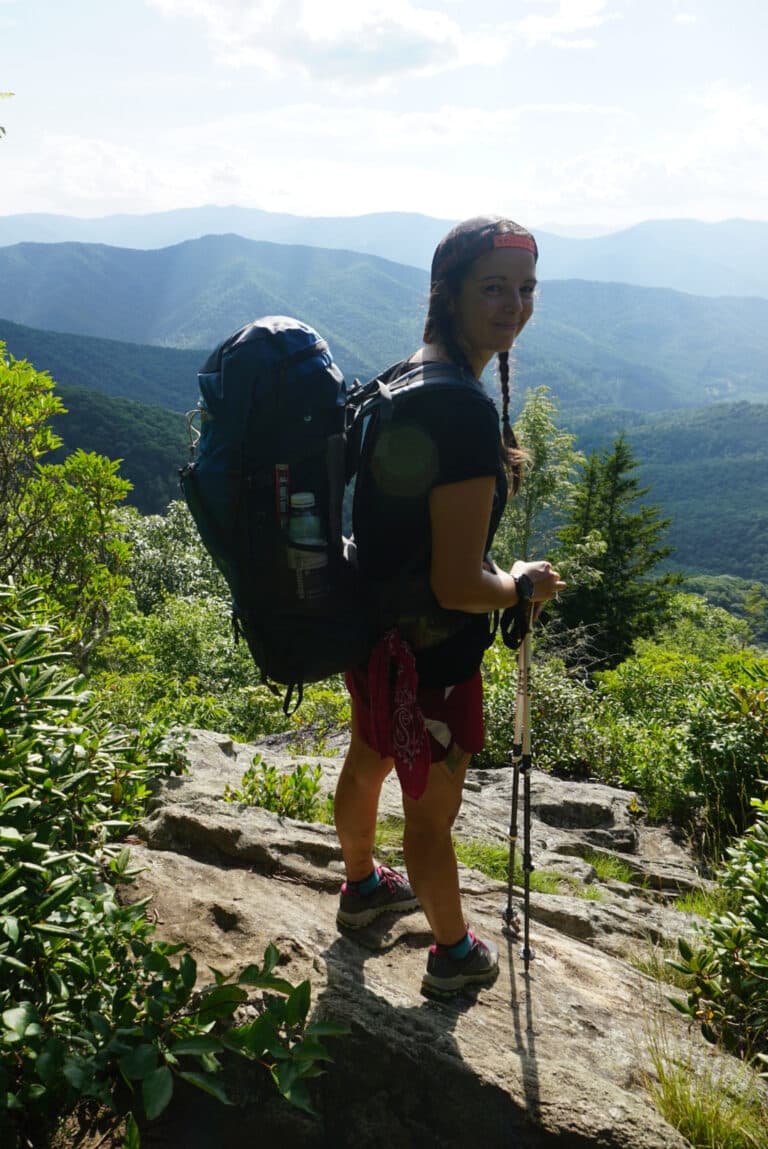WHAT’S BEST FOR TRAIL TIME?
Boots have long been considered a hiker’s most essential tool—necessary for support, stability, and protection on rocky, uneven trails. But as the ultralight trend grows, even backpackers seem to be on a gear diet. Packs, tents, and sleeping bags are measured in ounces rather than pounds—and the trend has trickled down to hikers’ feet.
Thru-hiker Kurt Peterson had an epiphany halfway through his 2,175-mile trek up the Appalachian Trail. Peterson hiked from Georgia to Virginia in heavy-duty waffle stompers, but in Waynesboro he bought a pair of low-cut Merrell Chameleons.
“They were infinitely kinder to my feet—less weight, more breathable yet still supportive,” says Peterson. “If you’re following blazes on well-trod trails like the A.T. with 40 pounds or less on your back, a good pair of trail shoes is all you need. Even hiking in deep snow, I still opt for Gore-Tex shoes with gaiters over boots.”
Ken Bennett agrees. The 48-year-old from Winston-Salem, N.C., who calls himself a four-season Southern Appalachian hiker, has been hitting the trail in lightweight mesh trail runners for the past decade. He made the switch after his burly boots frequently caused blisters.
“In the last few years I’ve seen a growing number of hikers wearing trail runners instead of boots,” says Bennett. “At the end of day hikes, my feet, knees, and quads are happier, and my ankles are fine.”
But plenty of boots are still readily available on outfitter shelves, and ankle protection just happens to be what keeps Mac McPherson loyal to his high-cut full-leather Lowas. The 57-year-old from Dale City, Va., hikes four days and up to 50 miles a week and leads trips for the Northern Virginia Hiking Club. While he tried more nimble trail shoes, he went back to his boots because they mitigated regular ankle twists. He wears them on short hikes among the piedmont woods of Prince William Forest Park, as well as longer, tougher stints in Shenandoah National Park. “I tie them up nice and tight, which has relieved my ankle problems,” says McPherson.
Pedorthist Steve Eschenberg of Diamond Brand Outfitters in Asheville, N.C., says there’s no need to polarize the options. There’s a dizzying array of hiking footwear on the market, and thanks to materials and technology, it’s not impossible to customize your experience. “With all the variety that’s available, especially with mid-range footwear, you can really dial in exactly what you need.”







